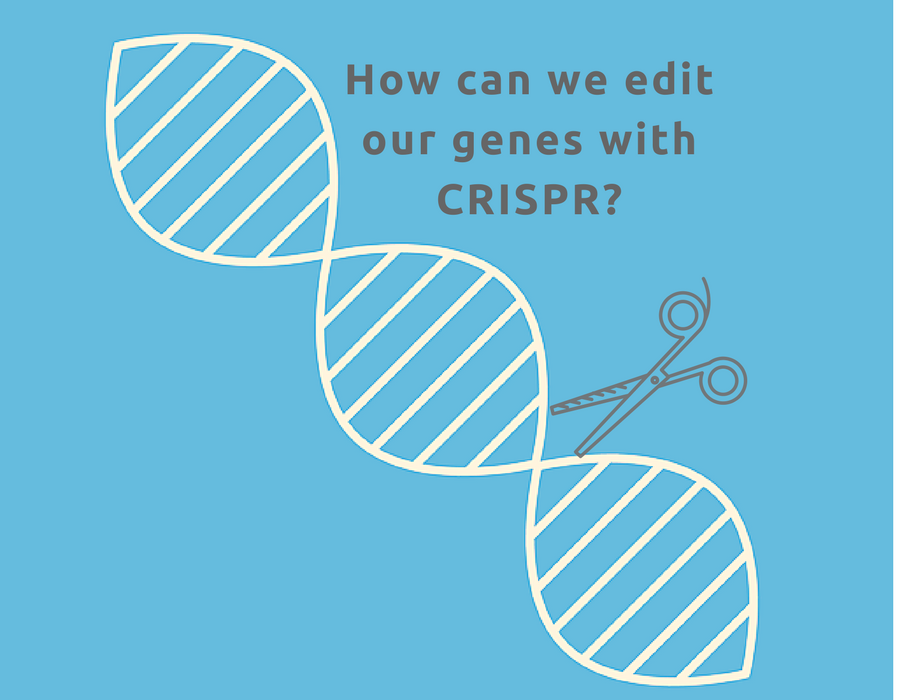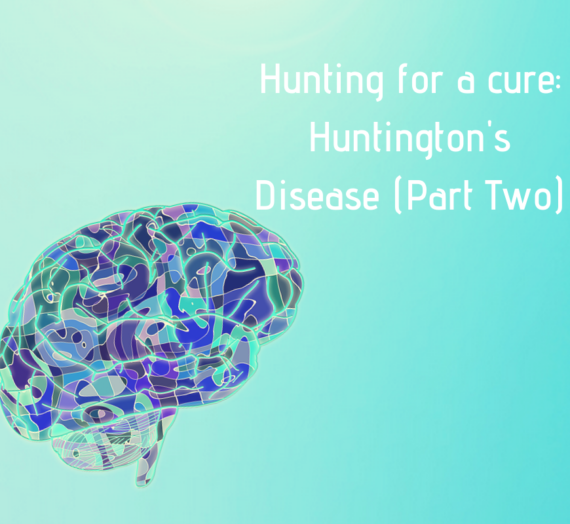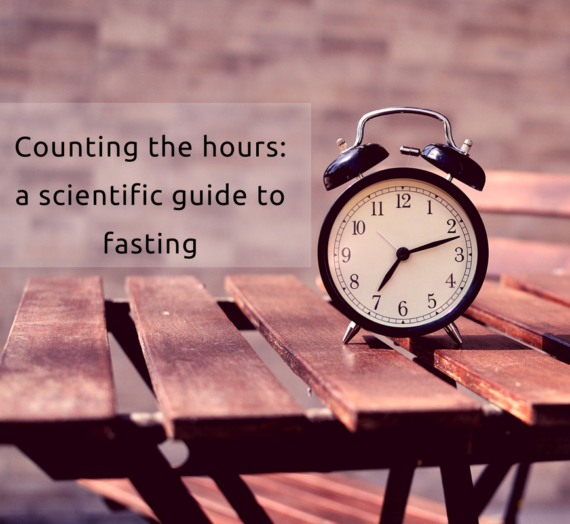Arzo Iqbal
 Often in biological sciences, it seems that we look to so-called “lower organisms” in order to find out how to move forward ourselves, and there is surely no greater example than that of the latest gene-editing technique, which bacteria have been using for millennia.
Often in biological sciences, it seems that we look to so-called “lower organisms” in order to find out how to move forward ourselves, and there is surely no greater example than that of the latest gene-editing technique, which bacteria have been using for millennia.
The CRISPR-Cas microbial adaptive immune system was first reported by Francisco Mojica (University of Alicante, Spain) in 1993, as a defence system against viral infections, in bacteria, and only in recent years have CRISPRs gene editing abilities been utilised by researchers.
CRISPR stands for Clustered Regularly interspaced Short Palindromic Repeat, referring to the organisation of the short partially palindromic repeated DNA sequences (and it is pronounced “crisper”). CRISPR-CAS9 can be used to modify genes anywhere in the genome, provided the target sequence is known. Researchers have already used CRISPR to treat cancer, muscular dystrophy, and to treat blindness, in lab mice. It could also potentially be used to “edit” and repair mutant genes causing neurological diseases, or silence them. This technique has profound implications for the treatment of neurological disorders caused by genetic mutations, such as Huntington’s disease.
Huntington’s disease is a non-curable, neurodegenerative condition caused by a mutation in the huntingtin gene, and affects approximately 12 in 100,000 people in the UK. There are several studies exploring CRISPR based therapies in the treatment of Huntington’s disease and other neurodegenerative diseases. A recent study developed a therapy that works by silencing “start sites” in the huntingtin gene, that signals protein production; thus, preventing huntingtin protein aggregation. Two groups of mice were infected with a mutant huntingtin gene, but only one group with the CRISPR-CAS9 therapy. After 3 weeks, the group with the mutant protein alone had large areas of protein aggregation, whereas the group with the CRISPR treatment had approximately 10%, meaning that over 90% of protein aggregation was blocked, as shown in figure 1. Despite these successful results, many issues need to be overcome before CRISPR based therapies are applied to neurological disorders.

For example, in the aforementioned study, the CRISPR therapy was unable to differentiate between the healthy and mutant genes, thus it may block the healthy huntingtin gene in vivo, which is undesirable, as the protein is essential for basic cell functions in the body. However, a more recent study may have overcome this shortcoming by targeting single nucleotide polymorphisms (SNPs), (Wan Shin et al. 2016). SNPs are located next to a mutation in the DNA sequence, and their sequences vary between the healthy and mutant genes, allowing the therapy to differentiate them. Complete inactivation of the mutant allele was achieved, with no impact on the healthy allele. Whilst this CRISPR based therapy holds great promise as a therapeutic treatment for Huntington’s and many other neurological diseases, in vivo delivery remains challenging, as the blood brain barrier needs to be crossed. Thus, the choice of delivery system is critical in the application of CRISPR-CAS9 therapies to neuroscience, for successful delivery of the genome editing system to the targeted cells in the brain.
Viral vectors have been extensively researched for the delivery of CRISPR-CAS9 to targeted cells in vivo. The adeno-associated virus, AAV9, has potential as a delivery system as it can cross the blood-brain barrier. Viral vectors are widely available and have been applied to many other gene therapies with success, however, they have limited packaging capacity for the delivery of the large proteins utilised in the CRISPR-CAS9 system. Nonetheless, Senis et al. (2014) successfully generated an AAV toolbox that managed to fit all the critical components of CRISPR-CAS9 into one vector. Furthermore, a smaller type of cas9 is being investigated (Ran et al. 2015), which remains efficient and can be packaged into the AAV9 vectors.
Despite the advantages of viral delivery systems, numerous challenges must be overcome before they can be used for therapeutic treatment in neuroscience; the two major limitations of viral vectors are the potential for immunogenicity and carcinogenesis. Non-viral vectors, such as cationic lipids, or nanoparticles, are a bio-safe alternative to viral vectors. However, as non-viral vectors have a lower delivery efficiency, viral vectors are still the more popular choice.
Rapid advances are being made in the search for an optimal delivery system for therapeutic application of CRISPR, however ,there is concern about the unpredictable effects the treatment may have in the body. A major issue with the use of CRISPR is the potential for off-target effects, which could lead to unintended mutations; if essential genes are disrupted, this could result in adverse side effects, such as cancer. Despite these concerns, studies on human stem cell clones and zebrafish have reported a low incidence of off-target effects for most cell types (Veres et al. 2014; Hruscha et al. 2013). Although these results show promise, many remain reluctant in the application of CRISPR in humans, especially when considering the devastating effects gene therapies have caused in the past.

In 2002, a gene therapy study searching for a treatment for X-linked SCID, resulted in the development of cancer in a young patient (Gore 2003). Thus, studies must focus on significantly reducing or eliminating the possibility of unintended effects. One study found that using a lower concentration of cas9 decreased the chance of off-target effects, but at the expense of the efficacy of the technique (Hsu et al. 2013). However, a more recent study reported a variant of CRISPR-CAS9 with a much lower rate of off-target effects, whilst retaining its efficiency (Benjamin et al. 2016). Despite these promising results, further studies must be undertaken before this new variant is applied to humans.
Although it may be a long-time before CRISPR-CAS9 can be used as a treatment for neurological diseases, there is no doubt that it has the potential to be a cure for these conditions. However, many challenges remain to be overcome before CRISPR can be exploited as a therapeutic treatment; the technique still has many flaws, from off-target effects, appropriate delivery systems, to other unpredictable effects within the body. Furthermore, the social and ethical issues surrounding genetic manipulation in humans are an important consideration; CRISPR can be used to edit genes in germ-line cells, some may abuse this technique to remove or edit “undesirable” genes. Despite these issues, the UK Human Fertilisation and Embryology Authority (HFEA) granted licence to researchers in the UK to edit human embryos (Callaway 2016). CRISPRs great potential and ease of use has made it a valuable tool in research, and was named ‘Breakthrough of the Year’ by the journal Science (Science 2015).
References
- Benraiss A. (2015). Gene-editing method halts production of brain-destroying proteins. [Online]. Science. Available at: http://www.sciencemag.org/news/2015/10/gene-editing-method-halts-production-brain-destroying-proteins
- Callaway E. (2016). UK scientists gain licence to edit genes in human embryos. Nature. 2016 Feb 4;530(7588):18. doi: 10.1038/nature.2016.19270.
- Cyranoski D. (2016). CRISPR Gene-editing tested in a person for the first time. Nature. [Online]. Available at: http://www.nature.com/news/crispr-gene-editing-tested-in-a-person-for-the-first-time-1.20988
- Figure 1 reprinted from ‘Science’. (2015). Gene-editing method halts production of brain-destroying proteins. [Online]. Science. Available at: http://www.sciencemag.org/news/2015/10/gene-editing-method-halts-production-brain-destroying-proteins
- Gore EM. (2003). Adverse effects of gene therapy: Gene therapy can cause leukaemia: no shock, mild horror but a probe. Gene therapy. 10, 4–4. doi:10.1038/sj.gt.3301946
- Hruscha A, Krawitz P, Rechenberg A et al. (2013). Efficient CRISPR/cas9 genome editing with low off-target effects in zebrafish. Development. 140: 4982-4987. doi: 10.1242/dev.099085
- Hsu PD, Scott DA, Weinstein JA et al. (2013). DNA targeting specificity of RNA-guided Cas9 nucleases. Nat. Biotechnol. 31, 827–832. doi: 10.1038/nbt.2647
- Kleinstiver PB, Pattanayak V, Prew SM et al. (2016). High-fidelity CRISPR–Cas9 nucleases with no detectable genome-wide off-target effects. Nature. 529, 490–495. doi:10.1038/nature16526.
- Kotterman MA, Chalberg TW, Schaffer DV. (2015). Viral Vectors for Gene Therapy: Translational and Clinical Outlook. Annu Rev Biomed Eng. 17:63-89. doi: 10.1146/annurev-bioeng-071813-104938.
- Ling L, Zhi-Yao H, Zia-Wei W et al. (2015). Challenges in CRISPR/CAS9 Delivery: Potential Roles of Nonviral Vectors. Human Gene Therapy. July 2015, 26(7): 452-462. doi:10.1089/hum.2015.069
- Maguire CA1, Ramirez SH, Merkel SF et al. (2014). Gene therapy for the nervous system: challenges and new strategies. Neurotherapeutics, PubMed. 11: 817. doi:10.1007/s13311-014-0299-5
- Manfredsson PF, Rising CA, Mandel JR. (2009). AAV9: A potential blood-brain buster. Mol Ther. 17(3): 403–405. doi: 10.1038/mt.2009.15
- Merienne N, Meunier C, Zimmer V et al. (2014). Genome editing for the treatment of huntington’s disease. [Online]. Available at: http://www.google.com/patents/EP2982758A1?cl=en
- Nelson EC, Hakim HC, Ousterout GD et al. (2016). Gene editing via CRISPR-Cas9 restores dystrophin protein and improves muscle function in mouse models of muscular dystrophy. Science. Vol. 351, Issue 6271, pp. 403-407. DOI: 10.1126/science.aad5143
- NHS. Huntington’s Disease. (2014). [Online]. Available at: http://www.nhs.uk/conditions/huntingtons-disease/pages/introduction.aspx
- Pennisi, E. (2013). The CRISPR Craze. Science, 341 (6148): 833-836
- Ran RA, Cong L, Yan XW et al. (2015). In vivo genome editing using Staphylococcus aureus Cas9. Nature 520, 186–19. doi:10.1038/nature14299
- Senis E, Fatourus, Grobe S et al. (2014). CRISPR/Cas9-mediated genome engineering: an adeno-associated viral (AAV) vector toolbox. Bioltechnol. 9(11):1402-12. doi: 10.1002/biot.201400046
- She A. (2016). CRISPR in Neuroscience. [Online]. Available at: http://sitn.hms.harvard.edu/flash/2016/crispr-in-neuroscience-how-precision-gene-editing-may-unravel-how-the-brain-works-and-why-it-sometimes-doesnt/
- Suzuki K, Tsunekawa Y, Benitez HR et al. (2016). In vivo genome editing via CRISPR/Cas9 mediated homology-independent targeted integration. Nature. 540, 144–149
- Travis J. (2015). Breakthrough of the Year: CRISPR makes the cut. Science. [Online]. Available at: http://www.sciencemag.org/news/2015/12/and-science-s-breakthrough-year.
- Veres A, Gosis BS, Ding Q et al. (2014). Low incidence of off-target mutations in individual CRISPR-Cas9 and TALEN targeted human stem cell clones detected by whole-genome sequencing. Cell Stem Cell. 15(1):27-30. doi: 10.1016/j.stem.2014.04.020.
- Wan Shin J. Kim HK, Chao JM et al. (2016). Permanent inactivation of Huntington’s disease mutation by personalized allele-specific CRISPR/Cas9. Hum Mol Genet. ddw286. doi: 10.1093/hmg/ddw286
- Wang L, Li F, Dang L et al. (2016). In Vivo Delivery Systems for Therapeutic Genome Editing. Int. J. Mol. Sci. 2016, 17(5), 626; doi:10.3390/ijms17050626
- Yang W, Tu Z, Sun Q et al. (2016). CRISPR/Cas9: Implications for Modeling and Therapy of Neurodegenerative Diseases. Front Mol Neurosci. 9:30. doi: 10.3389/fnmol.2016.00030





Blog update – In The Mind Library
[…] “Erase/Rewind” – How can we edit our genes with CRISPR? […]
Jennifer Doudna on CRISPR at the Royal Society – Seeking Science
[…] on from our post on CRISPR-Cas9 and its applications in Huntington’s disease, on Wednesday, we attended a very interesting talk […]
Top Science Stories 2018 – Seeking Science
[…] more on CRISPR in our guide here, plus our review of Jenniffer Doudna’s Royal Society talk on the […]